- Home
- Robert Graves
The White Goddess Page 10
The White Goddess Read online
Page 10
400 BC
First Belgic invasion of Britain – ‘La Tène’ Iron Age culture; and of Ireland between 350 and 300 BC. These people were a mixture of Teutons and Brythons (‘P-Celts’) and overran the greater part of the country: they were the ancient British whom the Romans knew. The Druidic culture of Gaul was ‘La Tène’.
50 BC–45AD
Second Belgic invasion. The principal tribesmen were the Atrebates who came from Artois, their settlements being identified by their bead-rimmed bowls. They had their capital at Calleva Atrebatum (Silchester) in North Hampshire, and their area of conquest extended from Western Surrey to the Vale of Trowbridge in Wiltshire, including Salisbury Plain.
*
If the story of Câd Goddeu concerns the capture of the national necropolis on Salisbury Plain from its former holders, this is most likely to have happened during either the first or the second Belgic invasion. Neither the coming of the round-barrow men, nor the Goidelic seizure of South-Eastern Britain, nor the Claudian conquest, which was the last before the coming of the Saxons, corresponds with the story. But according to Geoffrey of Monmouth’s mediaeval History of the Britons two brothers named Belinus and Brennius fought for the mastery of Britain in the fourth century BC; Brennius was beaten and forced north of the Humber. Brennius and Belinus are generally acknowledged to be the gods Bran and Beli; and Beli in the Welsh Triads is described as the father of Arianrhod (‘Silver Wheel’), the sister of Gwydion and Amathaon. Amathaon evidently entered the Battle of the Trees as champion of his father Beli, the Supreme God of Light.
So the Câd Goddeu can perhaps be explained as the expulsion of a long-established Bronze Age priesthood from the national necropolis by an alliance of agricultural tribesmen, long settled in Britain and worshippers of the Danaan god Bel, Beli, Belus or Belinus, with an invading Brythonic tribe. The Amathaonians communicated to their Brythonic allies – Professor Sir John Rhys takes Gwydion for a mixed Teuton-Celt deity and equates him with Woden – a religious secret which enabled Amathaon to usurp the place of Bran, the God of Resurrection, a sort of Aesculapius, and Gwydion to usurp that of Arawn King of Annwm, a god of divination and prophecy, and both together to institute a new religious system in the place of the old. That it was Gwydion who usurped Arawn’ s place is suggested by the cognate myth in the Romance of Math the Son of Mathonwy where Gwydion stole the sacred swine from Pryderi, the King of the Pembrokeshire Annwm. Thus the high sprigs of Bran’s alder were humbled, and the Dog, Roebuck and Lapwing stolen from Arawn were installed as guardians of the new religious secret. The Amathaonians’ motive for betraying their kinsmen to the foreign invaders will be discussed in Chapter Eight.
It appears that Bran’s people did not retire, after their spiritual defeat, without offering armed resistance; for the tradition is that 71,000 men fell in battle after the secret was lost.
What sort of a secret? Caesar records that the Gallic Celts claimed descent from ‘Dis’ – that is to say, from a god of the dead corresponding to Dis in the Latin pantheon – and also worshipped deities corresponding with Minerva, Apollo, Mars, Jupiter and Mercury. Since he also records that the Gallic Druids came to Britain for instruction in religion, the principal seat of the Dis cult was evidently in Britain. The capture of this shrine by a continental tribe was an epoch-making event, for it is clear from Caesar’s account that the Druidic ‘Dis’ was a transcendent god who took precedence of Minerva, Apollo, Mars, Mercury, (to whom we may add Venus and Saturn, the Latin Crow-god, cognate with Aesculapius) and even of Jupiter. And Lucan, in his poem Pharsalia, written in Nero’s reign, expressly states that souls, according to the Druids, do not go down to the gloomy Underworld of the Latin Dis, but proceed elsewhere and that death ‘is but the mid-point of a long life’.
The British Dis, in fact, was no mere Pluto but a universal god corresponding closely with the Jehovah of the Hebrew prophets. Similarly, it can be argued that since the prime religious ritual of the Druids ‘in the service of God Himself, as Pliny records, was bound up with the mistletoe, ‘which they call all-heal in their language’ and ‘which falls from Heaven upon the oak’, the name of ‘Dis’ could not have been Bran, there being no mythic or botanical connexion between the alder and the mistletoe. Thus it is likely that the guessing of Bran’s name was merely a clue towards guessing that of the Supreme God: Gwydion did not become Dis, nor did Amathaon; but they together displaced Bran (Saturn) and Arawn (Mercury) in their service of Dis, and redefined his godhead as Beli. But if so, was Dis originally Donnus, in fact Danu?
It happens that we know the Norse name of Gwydion’ s horse, if Gwydion was indeed Woden, or Odin. It was Askr Yggr-drasill, or Ygdrasill, ‘the ash-tree that is the horse of Yggr’, Yggr being one of Woden’s titles. Ygdrasill was the enchanted ash, sacred to Woden, whose roots and branches in Scandinavian mythology extended through the Universe. If Bran had been clever enough at the Câd Goddeu he would have pronounced his englyn first, with:
Sure-hoofed is my steed in the day of battle.
The high sprigs of ash are in thy hand –
Woden thou art, by the branch thou bearest.
The Battle of the Trees thus ended in a victory of the Ash-god and his ally over the Alder-god and his ally.
The pre-Celtic Annwm from which Gwydion is said to have stolen the sacred swine of King Pryderi, and over which Arawn reigned in the Romance of Pwyll Prince of Dyved, was in the Prescelly Mountains of Pembrokeshire. But it is likely that there were at least two Annwms, and that the ‘Battle of the Trees’ took place at the Annwm in Wiltshire before Gwydion’s people invaded South Wales. It would be fallacious to regard Stonehenge as Bran’s shrine, because it is an unsuitable site for the worship of an Alder-god. The older, larger, grander Avebury ring thirty miles to the north at the junction of the Kennet and a tributary, is the more likely site; and is proved by the débris removed from the ditch about it to have been in continuous use from the early Bronze Age to Roman times. All the available evidence points to Stonehenge as Beli’s seat, not Bran’s; it is laid out as a sun-temple in cultured Apollonian style which contrasts strangely with the archaic roughness of Avebury.
Geoffrey records that Bran and Beli (who, he says, gave his name to Billingsgate) were later reconciled, and together fought battles on the Continent. It is possible that troops from Britain served in the successful expedition of Gauls against Rome in 390 BC. The Gaulish leader was Brennus – Celtic kings habitually took the name of their tribal gods – and Geoffrey’s confused account of subsequent Continental wars undertaken by Bran and Belin evidently refers to the Gaulish invasion of Thrace and Greece in 279 BC when Delphi was plundered, the chief commander of the Gauls being another Brennus. At any rate, the alder remained a sacred tree in Britain for long after this Câd Goddeu; a King of Kent as late as the fifth century AD was named Gwerngen, ‘son of the Alder’. The answer to one of the riddles in the ‘Taliesin’ poem-medley called Angar Cyvyndawd (‘Hostile Confederacy’), “Why is the alder of purplish colour?’, is doubtless: ‘Because Bran wore royal purple.’
The ultimate origin of the god Beli is uncertain, but if we identify the British Belin or Beli with Belus the father of Danäus (as Nennius does), then we can further identify him with Bel, the Babylonian Earth-god, one of a male trinity, who succeeded to the titles of a far more ancient Mesopotamian deity, the mother of Danaë as opposed to the father of Danäus. This was Belili, the Sumerian White Goddess, Ishtar’s predecessor, who was a goddess of trees as well as a Moon-goddess, Love-goddess and Underworld-goddess. She was sister and lover to Du’uzu, or Tammuz, the Corn-god and Pomegranate-god. From her name derives the familiar Biblical expression ‘Sons of Belial’ – the Jews having characteristically altered the non-Semitic name Belili into the Semitic Beliy ya’al (‘from which one comes not up again’, i.e. the Underworld) – meaning ‘Sons of Destruction’. The Slavonic word beli meaning ‘white’ and the Latin bellus meaning ‘beautiful’ are also ultimately connected with her name. Original
ly every tree was hers, and the Goidelic bile, ‘sacred tree’, the mediaeval Latin billa and billus, ‘branch, trunk of tree’, and the English billet are all recollections of her name. Above all, she was a Willow-goddess and goddess of wells and springs.
The willow was of great importance in the worship of Jehovah at Jerusalem, and the Great Day of the Feast of Tabernacles, a fire and water ceremony, was called the Day of Willows. Though alder and willow are not differentiated in Hebrew – they are of the same family – Tanaitic tradition, dating from before the destruction of the Temple, prescribed that the red-twigged willow with lanceolate leaves, i.e. the purple osier, should be the sort used in the thyrsus of palm, quince and willow carried during the Feast; if none were obtainable, then the round-leaved willow, i.e. the sallow or ‘palm’, might be used, but the variety with toothed leaves, i.e. the alder, was forbidden – presumably because it was used in idolatrous rites in honour of Astarte and her son the Fire-god. Although the use of the thyrsus was obligatory, the Israelites having taken it over with the Canaanites’ Tabernacle ceremonies and incorporated it in the Mosaic Law, the willow (or osier) was mistrusted by the more intelligent Jews in later days. According to one Hagadah, the willow in the thyrsus symbolized the ‘inferior and ignorant of Israel who have neither righteousness nor knowledge, as the willow has neither taste nor smell’: in fact, even the indifferent would be provided for by Jehovah. By his triumphant supersession of Queen Belili, Bel became the Supreme Lord of the Universe, father of the Sun-god and the Moon-god, and claimed to be the Creator: a claim later advanced by the upstart Babylonian god Marduk. Bel and Marduk were finally identified, and since Marduk had been a god of the Spring Sun and of thunder, Bel had similarly become a sort of Solar Zeus before his emigration to Europe from Phoenicia.
It seems then that Beli was originally a Willow-god, a divinatory son of Belili, but became the God of Light, and that in fourth-century BC Britain, at the Câd Goddeu, his power was invoked by his son Amathaon as a means of supplanting Bran of the alder, whose counterpart had perhaps been similarly supplanted in Palestine. At the same time Gwydion of the ash supplanted Arawn, another divinatory god whose tree is not known. The implications of these peculiar interchanges of divine function will be discussed in a later chapter.
The author of the Romance of Taliesin evidently knew Amathaon as ‘Llew Llaw’, a Brythonic title of Hercules, since he says in the Cerdd am Veib Llyr (‘Song Concerning the Sons of Llyr’):
I was at the Câd Goddeu with Llew and Gwydion,
He who transformed timber, earth and plants.
The case is complicated by occasional bardic references to Beli and the sea which at first sight suggest that he is a Sea-god: the waves are his horses, the brine is his liquor. But this probably honours him as the tutelary deity of Britain, his ‘honey isle’ as it is called in a Triad – no god can rule over an island unless he also commands the adjacent waters – with a hint also that as the Sun-god he ‘drinks the waters of the West’ every evening at sunset, and that white horses are traditionally sacred to the sun.
The last form in which the famous conflict between Beli and Bran occurs is the story of the brothers Balin and Balan in Malory’s Morte D’Arthur, who killed each other by mistake. But, as Charles Squire points out in his Celtic Myth and Legend, Bran appears in various other disguises in the same jumbled romance. As King Brandegore (Bran of Gower) he brings five thousand men to oppose King Arthur; but as Sir Brandel or Brandiles (Bran of Gwales) he fights valiantly on Arthur’s side. As King Ban of Benwyk (‘the square enclosure’, called ‘Caer Pedryvan’ in the poem Preiddeu Annwm which will be examined in Chapter Six) he is a foreign ally of Arthur’s; as Leodegrance – in the Welsh, Ogyr Vran – he is Arthur’s father-in-law; and as Uther Ben (‘the wonderful head’), which is a reference to the story of the singing head buried on Tower Hill, he is Arthur’s father. The Norman-French trovères and Malory who collected and collated their Arthurian romances had no knowledge of, or interest in, the historical and religious meaning of the myths that they handled. They felt themselves free to improve the narrative in accordance with their new gospel of chivalry fetched from Provence – breaking up the old mythic patterns and taking liberties of every sort that the Welsh minstrels had never dared to take.
The modern licence claimed by novelists and short-story writers to use their imaginations as freely as they please prevents students of mythology from realizing that in North-Western Europe, where the post-Classical Greek novel was not in circulation, story-tellers did not invent their plots and characters but continually retold the same traditional tales, extemporizing only when their memory was at fault. Unless religious or social change forced a modification of the plot or a modernization of incident, the audience expected to hear the tales told in the accustomed way. Almost all were explanations of ritual or religious theory, overlaid with history: a body of instruction corresponding with the Hebrew Scriptures and having many elements in common with them.
1 As barnacles turn Soland-geese,
I’ th’ Islands of the Orcades.
(Butler’s Hudibras)
Chapter Four
THE WHITE GODDESS
Since the close connexion here suggested between ancient British, Greek, and Hebrew religion will not be easily accepted, I wish to make it immediately clear that I am not a British Israelite or anything of that sort. My reading of the case is that at different periods in the second millennium BC a confederacy of mercantile tribes, called in Egypt ‘the People of the Sea’, were displaced from the Aegean area by invaders from the north-east and south-east; that some of these wandered north, along already established trade-routes, and eventually reached Britain and Ireland; and that others wandered west, also along established trade-routes, some elements reaching Ireland by way of North Africa and Spain. Still others invaded Syria and Canaan, among them the Philistines, who captured the shrine of Hebron in southern Judaea from the Edomite clan of Caleb; but the Calebites (‘Dog-men’), allies of the Israelite tribe of Judah, recovered it about two hundred years later and took over a great part of the Philistine religion at the same time. These borrowings were eventually harmonized in the Pentateuch with a body of Semitic, Indo-European and Asianic myth which composed the religious traditions of the mixed Israelite confederacy. The connexion, then, between the early myths of the Hebrews, the Greeks and the Celts is that all three races were civilized by the same Aegean people whom they conquered and absorbed. And this is not of merely antiquarian interest, for the popular appeal of modern Catholicism, is, despite the patriarchal Trinity and the all-male priesthood, based rather on the Aegean Mother-and-Son religious tradition, to which it has slowly reverted, than on its Aramaean or Indo-European ‘warrior-god’ elements.
To write in greater historical detail about the Danaans. Danu, Danaë, or Dôn, appears in Roman records as Donnus, divine father of Cottius, the sacred King of the Cottians, a Ligurian confederacy that gave its name to the Cottian Alps. Cottys, Cotys, or Couttius is a widely distributed name. Cotys appears as a dynastic title in Thrace between the fourth century BC and the first century AD, and the Cattini and Attacoti of North Britain and many interesting Catt- and Cott- tribes between there and Thrace are held to be of Cottian stock. There was also a Cotys dynasty in Paphlagonia on the southern shore of the Black Sea. All seem to take their name from the great Goddess Cotytto, or Cotys, who was worshipped orgiastically in Thrace, Corinth and Sicily. Her nocturnal orgies, the Cotyttia, were according to Strabo celebrated in much the same way as those of Demeter, the Barley-goddess of primitive Greece, and of Cybele, the Lion-and-Bee goddess of Phrygia in whose honour young men castrated themselves; in Sicily a feature of the Cotyttia was the carrying of boughs hung with fruit and barley-cakes. In Classical legend Cottys was the hundred-handed brother of the hundred-handed monsters Briareus and Gyes, allies of the God Zeus in his war against the Titans on the borders of Thrace and Thessaly. These monsters were called Hecatontocheiroi (‘the hundred-handed ones’).
The story of this war against the Titans is intelligible only in the light of early Greek history. The first Greeks to invade Greece were the Achaeans who broke into Thessaly about 1900 BC; they were patriarchal herdsmen and worshipped an Indo-European male trinity of gods, originally perhaps Mitra, Varuna and Indra whom the Mitanni of Asia Minor still remembered in 1400 BC, subsequently called Zeus, Poseidon and Hades. Little by little they conquered the whole of Greece and tried to destroy the semi-matriarchal Bronze Age civilization that they found there, but later compromised with it, accepted matrilinear succession and enrolled themselves as sons of the variously named Great Goddess. They became allies of the very mixed population of the mainland and islands, some of them long-headed, some broad-headed, whom they named ‘Pelasgians’, or seafarers. The Pelasgians claimed to be born from the teeth of the cosmic snake Ophion whom the Great Goddess in her character of Eurynome (‘wide rule’) had taken as her lover, thereby initiating the material Creation; but Ophion and Eurynome are Greek renderings of the original names. They may have called themselves Danaans after the same goddess in her character of Danaë, who presided over agriculture. At any rate the Achaeans who had occupied Argolis now also took the name of Danaans, and also became seafarers; while those who remained north of the isthmus of Corinth were known as Ionians, children of the Cow-goddess Io. Of the Pelasgians driven out of Argolis some founded cities in Lesbos, Chios and Cnidos; others escaped to Thrace, the Troad and the North Aegean islands. A few clans remained in Attica, Magnesia and elsewhere.
The most warlike of the remaining Pelasgians were the Centaurs of Magnesia, whose clan totems included the wryneck and mountain lion. They also worshipped the horse, probably not the Asiatic horse brought from the Caspian at the beginning of the second millennium BC, but an earlier, and inferior, European variety, a sort of Dartmoor pony. The Centaurs under their sacred king Cheiron welcomed Achaean aid against their enemies the Lapiths, of Northern Thessaly. The word ‘Cheiron’ is apparently connected with the Greek cheir, a hand, and ‘Centaurs’ with centron, a goat. In my essay What Food the Centaurs Ate, I suggest that they intoxicated themselves by eating ‘fly-cap’ (amanita muscaria), the hundred-clawed toad, an example of which appears, carved on an Etruscan mirror, at the feet of their ancestor Ixion. Were the Hecatontocheiroi the Centaurs of mountainous Magnesia, whose friendship was strategically necessary to the Achaean pastoralists of Thessaly and Boeotia? The Centaurs’ mother goddess was called, in Greek, Leucothea, ‘the White Goddess’, but the Centaurs themselves called her Ino or Plastene, and her rock-cut image is still shown near the ancient pinnacle-town of Tantalus; she had also become the ‘mother’ of Melicertes, or Hercules Melkarth, the god of earlier semi-Semitic invaders.

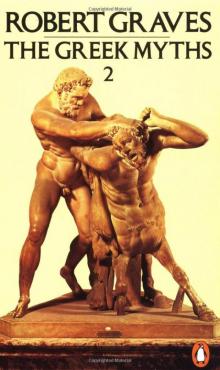 The Greek Myths, Volume2
The Greek Myths, Volume2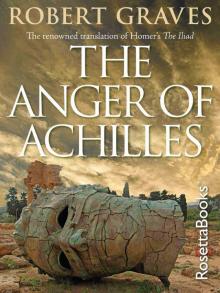 The Anger of Achilles: Homer's Iliad
The Anger of Achilles: Homer's Iliad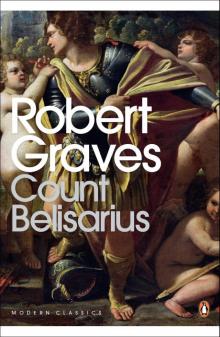 Count Belisarius
Count Belisarius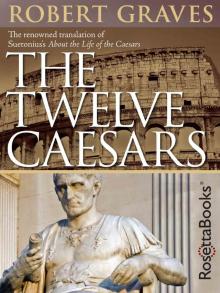 The Twelve Caesars
The Twelve Caesars Complete Poems 3 (Robert Graves Programme)
Complete Poems 3 (Robert Graves Programme) Homer's Daughter
Homer's Daughter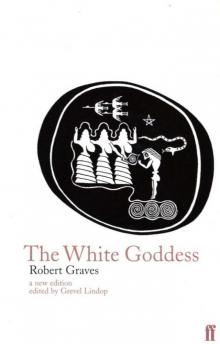 The White Goddess
The White Goddess Goodbye to All That
Goodbye to All That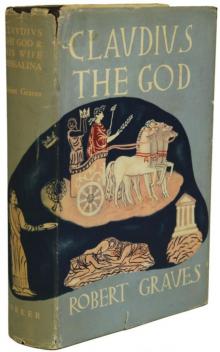 Claudius the God and His Wife Messalina
Claudius the God and His Wife Messalina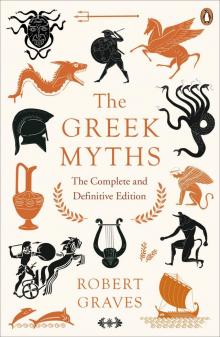 The Greek Myths
The Greek Myths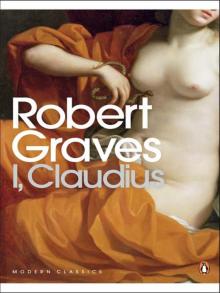 I, Claudius
I, Claudius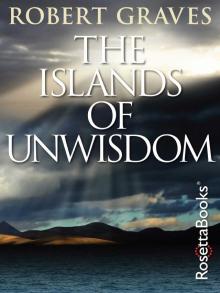 The Islands of Unwisdom
The Islands of Unwisdom Complete Short Stories
Complete Short Stories The Golden Fleece
The Golden Fleece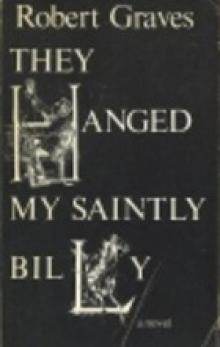 They Hanged My Saintly Billy
They Hanged My Saintly Billy King Jesus
King Jesus Sergeant Lamb's America
Sergeant Lamb's America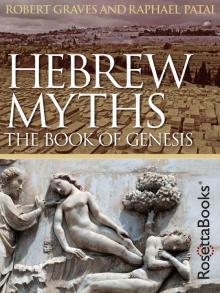 Hebrew Myths: The Book of Genesis
Hebrew Myths: The Book of Genesis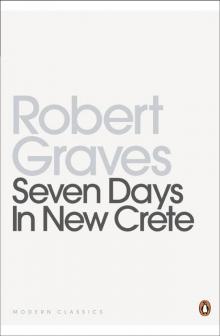 Seven Days in New Crete
Seven Days in New Crete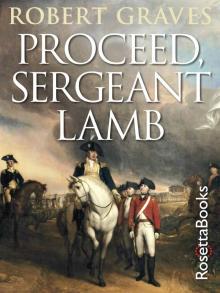 Proceed, Sergeant Lamb
Proceed, Sergeant Lamb Claudius the God
Claudius the God Wife to Mr. Milton
Wife to Mr. Milton The Complete Poems
The Complete Poems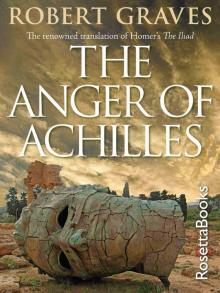 The Anger of Achilles
The Anger of Achilles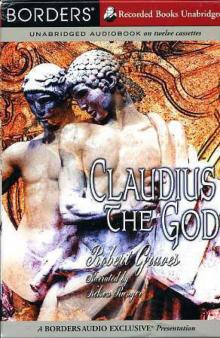 Claudius the God c-2
Claudius the God c-2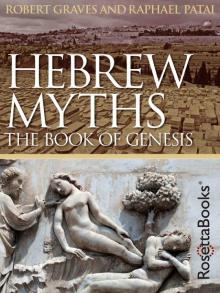 Hebrew Myths
Hebrew Myths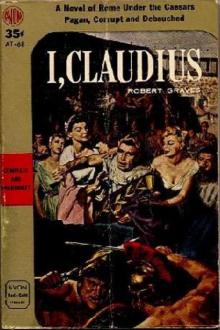 I, Claudius c-1
I, Claudius c-1 The Greek Myths, Volume 1
The Greek Myths, Volume 1